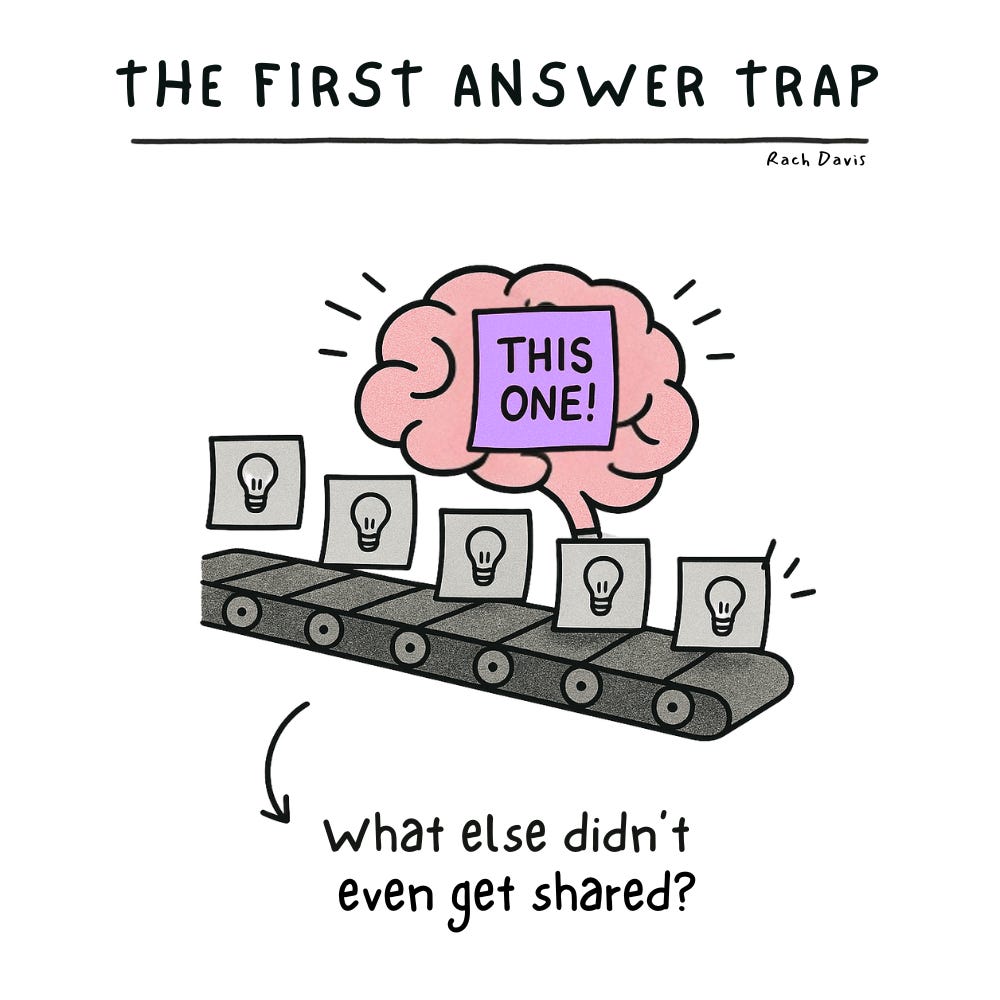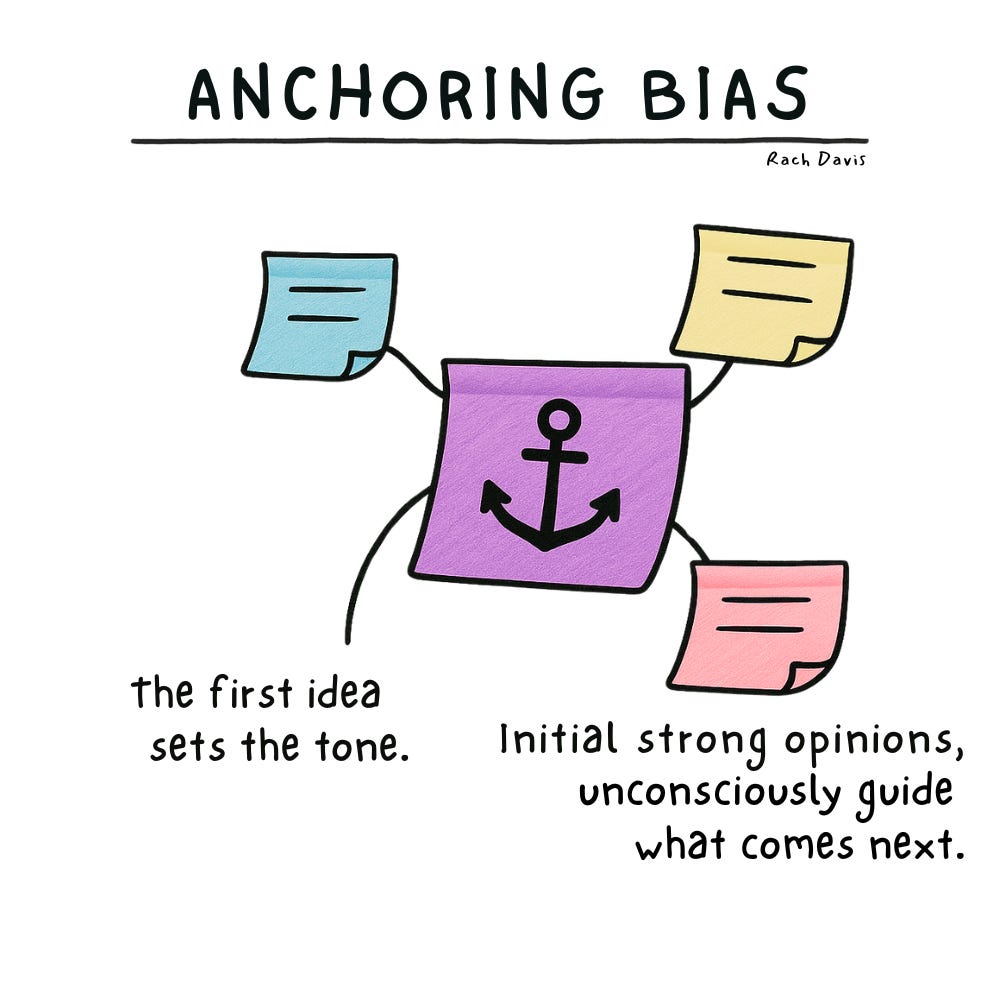Not So Fast — Why We Stop at the First Answer and How to Push Past It
An article series on how to challenge default answers and mediocre ideas
There’s a moment—just after a question—when the mind does something unconsciously.
It offers up something familiar — a thought we’ve had before, maybe not in the exact words, but close. It’s polished just enough to feel done. Safe enough to say out loud. And often, we stop there. Not because we’ve reached something creative or unique, but because we’ve landed somewhere comfortable.
💥 Truth Bomb 💥
The first answer is often shitty. It’s just the easiest, the fastest, the most obvious — the one closest to the surface.
We have to reframe from this is the way to this is a way.
We must go beyond the first answer to the second, third, and twentieth. That’s where you find creative leaps; the insights and ideas we would have found if we didn’t just stop after our default response.
Why did we stop at the first answer?
We mistake speed for progress. Fast feels productive. Fast decisions give us instant relief. The sooner we solve something, the better we feel.
Our brains love closure. We tend to freak out with open loops, so we gravitate towards what fills the gap quickly.
Familiar becomes the default. It’s a comfort bias. That first answer feels comfortable. Many times, it even repeats a past solution instead of a new one.
Being the contrarian feels wrong. We don’t want to seem difficult. Being that person who says “Wait, are we sure?” doesn’t seem worth it.
Binary thinking takes over. We think in Yes/No instead of What Else? And that first idea gets our yes so we can move fast.
And so the mediocre, uninspired ideas become the way forward, not because they are the first answers but because they give us certainty, control, and relief. They solve those emotional needs faster than a better idea can emerge.
Even though there’s something strangely comforting about having an answer, unique solutions, and real breakthroughs don’t come from just speed. We need to stay in uncertainty long enough for the flashes of brilliance to emerge.
The real problem…
It’s not just that we grab the first answer— it’s that we usually don’t even realize we do that.
This happens so much. It’s normalized and invisible. So we don’t even search for ways to do it differently.
Once you notice it, what do you do next? What can we do to push past the first answer? To train our brains to go further.
How do we make the shift?
I’m not suggesting endless deliberation. That’s not where this is going. Instead I want to share actionable ways to interrupt our default thinking. Different techniques for breaking the habit of settling too soon, of getting stuck at the first draft.
This is about pushing just far enough to see what we almost missed.
That first answer is easy to grab but harder to escape.
The moment that idea lands as the one, everything that follows is anchored to it — orbits around it.
Every suggestion gets compared to it.
Every discussion builds on it.
Every alternative gets filtered through it.
This is called the Anchoring Bias.
You’ve seen how easy it is to stop at the first answer.
The question now is—what do you do instead?
How do you break free of the first answer trap?
In the rest of this series, I’ll share a few ways to interrupt that unconscious habit.
Techniques with just enough tension to push thinking further.
Next up,
The 3-Pass Approach, Reframe Roulette, and The 5% Shift.
They’re less about getting it right, and more about staying with the question long enough to see what else might be possible.
✨ Here’s to breaking routine, welcoming the weird, + workshopping with wonder. ✨




Thanks for bringing this back to my attention! I too often fall into this trap and I’m looking forward to what’s to come in helping me and my teams think better.